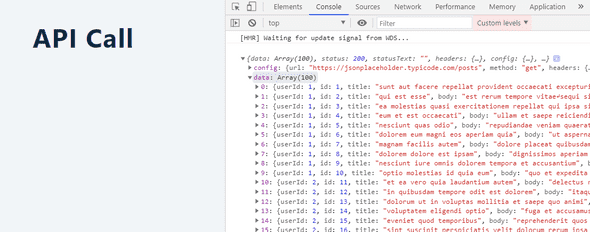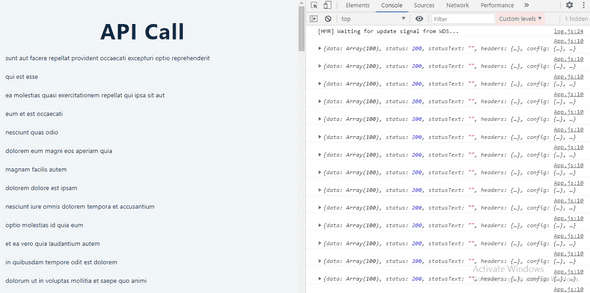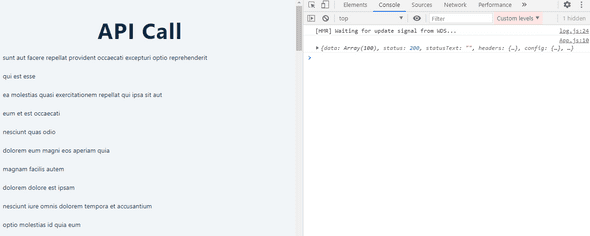REACTJS - How to make API call in React Hooks with useEffect()
by Subin Sudhakaran / 15th November, 2020
Portfolio: subinsamrat.netlify.com
By now everyone should have solid understanding of state and effect hook. In this post, we will apply the acquired knowledge to see how to fetch data from an API endpoint.
One point you should know though in future, a new feature called SUSPENSE would be incharge for data fetching. Nevertheless using state and effect hooks to acheive the same is a great way to solidify the understanding of those hooks.
Let's get started.
Install Axios for data fetching
You could use fetch API, but i would prefer axios for data fetching.
npm i axios
Once the axios installation is over, the package should be present in your package.json.
Create component for data fetch logic
DataFetching.json
Import necessary hooks, useState and useEffect from react and also axios.
import React, { useState, useEffect } from "react";
import axios from "axios";
We have necessary imports added, next step is to fetch data. For that we are going to be using JSON PLACEHOLDER (https://jsonplaceholder.typicode.com/) which is a fake REST API developed for testing purpose.
In the Resources section, you will find the 6 common endpoints that they have provided. Click on any endpoint to see the desired JSON results.
We will use "/posts" endpoint which will provide array of 100 posts. First we are going to create a new state variable posts and setPosts function for updating state _posts.
const [posts, setPosts] = useState([]); // initial posts value set to empty array
Now we will create effect to fetch data from URL endpoint. useEffect accepts arrow function, in that function we make our GET requests using axios.
useEffect(()=> {
axios.get("https://jsonplaceholder.typicode.com/posts") // returns promise
.then ((response)=> console.log(response));
})
Console:
Array of 100 posts has been listed. Next step, is to render the lists of posts in the browser.
Render the posts
<ul>
{posts.map((post) => {
return (
<li style={{ margin: "20px 0 0 40px" }} key={post.id}>
{post.title}
</li>
);
})}
</ul>
Right after logging out the fetched object, update the state using setPosts function which will then be rendered in the UI.
useEffect(() => {
axios.get("https://jsonplaceholder.typicode.com/posts").then((response) => {
console.log(response);
setPosts(response.data);
});
});
We can in the console that the posts titles are rendered in the UI, but if you take a look at the console, we can see that api call has been keep on running for infinite loop of data fetching. Instead we have to fetch either if someone updates the state or only at the beginning.
This can be acheived by adding empty dependency array as second parameter.
useEffect(() => // function.., []);
If you now look into the browser, the data is fetched only once and the same is rendered in the UI. So this is pretty much how we fetch data with useEffect.


